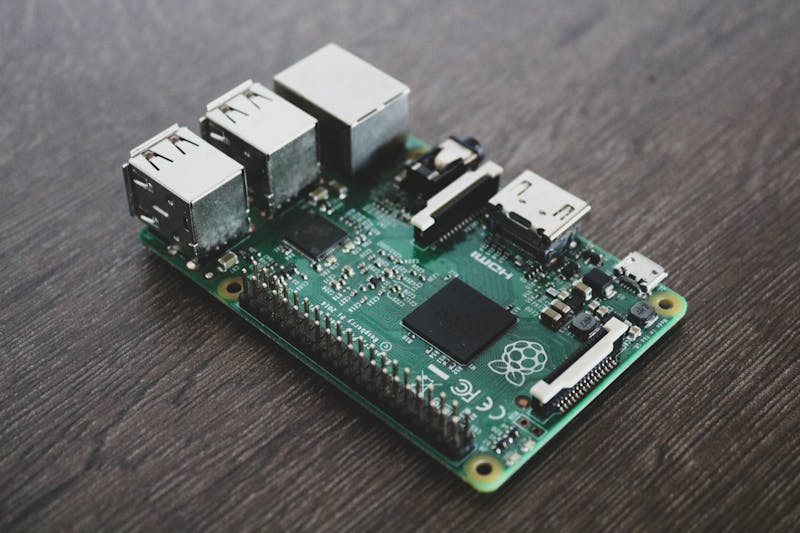The Raspberry Pi is a powerful and versatile single-board computer that unlocks a world of DIY possibilities. In this project, we’ll guide you through building your very own smart assistant using a Raspberry Pi.
This smart assistant will be able to perform various tasks based on your voice commands, like playing music, controlling smart home devices, setting alarms, and answering your questions through the internet.
Materials Required:
- Raspberry Pi (Any model will work, but Raspberry Pi 4 offers the best performance)
- MicroSD card (8GB or higher recommended)
- Power supply for Raspberry Pi (matched to your Pi model)
- Micro HDMI cable
- HDMI cable (to connect to your monitor)
- Keyboard and mouse
- Case for your Raspberry Pi (optional)
- Speaker (with 3.5mm jack or USB connection)
- Microphone (USB microphone recommended)
Software Required:
- Raspberry Pi Imager (https://www.raspberrypi.com/software/)
- Operating System: Raspberry Pi OS Lite (https://www.raspberrypi.com/software/)
- Speech Recognition Software: Snips (https://snips.ai/) or Google Assistant (limited functionality)
Steps:
1. Setting Up the Raspberry Pi OS:
- Download the Raspberry Pi Imager tool and install it on your computer.
- Download the latest version of Raspberry Pi OS Lite (64-bit recommended) from the official website.
- Connect your MicroSD card to your computer using a card reader.
- Launch the Raspberry Pi Imager tool and select the downloaded OS image.
- Choose your MicroSD card as the destination and click “Write.” This will format the card and install the OS.
2. Booting Up Your Raspberry Pi:
- Once the imaging is complete, eject the MicroSD card and insert it into your Raspberry Pi.
- Connect the power supply, keyboard, mouse, HDMI cable (to monitor), and microphone to your Raspberry Pi.
- Connect the speaker if using a 3.5mm jack, or configure USB audio settings if using a USB microphone.
- Power on your Raspberry Pi. The boot process will begin, and you’ll be greeted by the Raspberry Pi configuration menu.
3. Initial Configuration:
- Follow the on-screen instructions to set your language, timezone, Wi-Fi network, and password.
- Update your Raspberry Pi by running the following commands in the terminal window:
sudo apt update
sudo apt upgrade -y
4. Installing Speech Recognition Software:
We’ll be using Snips for this project. Snips is an open-source platform for building voice assistants.
- Follow the official Snips documentation (https://docs.snowsoftware.com/) to install the Snips toolkit and create a new assistant project.
- The documentation will guide you through setting up a wake word (the word that triggers the assistant), installing hotword detection models, and configuring voice assistants like Mozilla DeepSpeech or Vosk for speech recognition.
5. Customizing Your Smart Assistant:
Snips allows you to create custom skills and functionalities for your voice assistant. Explore the Snips documentation for tutorials on:
- Creating hotwords with custom audio recordings.
- Building custom voice actions (e.g., playing music, controlling smart home devices).
- Integrating with online APIs for weather updates, news, and other functionalities.
6. (Optional) Setting Up Google Assistant:
While Snips offers greater customization, you can also explore setting up Google Assistant on your Raspberry Pi. However, keep in mind that Google Assistant functionality might be limited compared to its native environment.
- There are several third-party tutorials available online that explain how to set up Google Assistant on Raspberry Pi. These typically involve installing unofficial software and may require advanced configuration.
7. Putting it All Together:
Once you’ve configured your chosen speech recognition software and customized your assistant’s functionalities, it’s time to test it out! Speak your chosen wake word and start interacting with your Raspberry Pi smart assistant.
Additional Tips:
- There are numerous online resources and tutorials available for Raspberry Pi projects. Don’t hesitate to search for more specific guides related to your chosen speech recognition software or desired functionalities.
- Consider using a Raspberry Pi case to protect your hardware and improve aesthetics.
- Explore connecting your smart assistant to smart home devices using platforms like IFTTT or custom scripts.
Building your own smart assistant with Raspberry Pi is a rewarding project that allows you to experiment with voice-controlled technology and explore the vast capabilities of this versatile single-board computer. Remember, this is just a starting point – unleash your creativity and customize your assistant to suit your needs!





